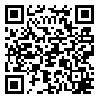BibTeX | RIS | EndNote | Medlars | ProCite | Reference Manager | RefWorks
Send citation to:
URL: http://hnmj.gums.ac.ir/article-1-26-en.html

 , Mehdi Khobdel *
, Mehdi Khobdel * 
 1, Mohammad Ghasemi
1, Mohammad Ghasemi 
 , Rabiolah Farmanbar
, Rabiolah Farmanbar 
 , Mohammd REza Jafari
, Mohammd REza Jafari 
 , Tahereh KamliKhah
, Tahereh KamliKhah 

Knowledge and behavior of newly entered students to Tehran University toward HIV/AIDS
BY:Rahmati Najarkolaei F 1, Khoobdel M *2, Ghasemi M1, Farmanbar R3 , Jafari M R4, Khamalikhah T5
1. Health Research Center, Assistant professor, Baqiyatallah University of Medical Sciences, Tehran, Iran
2. Health Research Center, Associate professor, Baqiyatallah University of Medical Sciences, Tehran, Iran
3.Department of Health Education, Assistant professor, Social Determinants of Health Research Center, School of Health, Guilan University of Medical Sciences, Rasht, Iran
4. MSC Student in clinical psychology, Science and research azad university, Saveh, Iran
5. PhD Student in Health Education, School of Health, Yazd University of Medical Sciences,Yazd, Iran
Received: 2011/10/13
Accept: 2012/9/30
Abstract
Introduction: Statistics indicate increase of HIV/AIDS incidence in Iranian youth. Knowledge and high risk behavior assessment in youth is important in preventive planning of HIV/AIDS.
Objective: Present study aimed to determine knowledge and frequency of high risk behaviors about HIV/AIDS among newly accepted students at Tehran University in 2009 in order to use study findings in designing preventive educational programs on AIDS.
Methods: A total of 664 students from 12 faculties of Tehran University were chosen using random stratified systematic sampling. Data collection instrument consisted of 29 questions regarding transmission and prevention and high risk behaviors of this disease. Data were analyzed by descriptive statistics (tables, central criteria and frquency) and analytical tests (Chi-square).
Results: Based on findings 92% of them reported their knowledge level regarding AIDS as satisfactory and about 71.1% of them identified themselves to be at low risk of HIV/AIDS. The most previous information source was media including television and publications ( 93.1% and 82% respectively). However more than 20% of students had high risk behavior towards HIV/AIDS and almost 45.6% didn't have satisfactory knowledge on ways of HIV/AIDS transmision. In addition there was a significant relationship between knowledge level and age and field of study (p<0.0001).
Conclusion: Considering the results, students had appropraite knowledge level on HIV/AIDs but they are unware of STDs and preventive behaviors. In addiation, many of students had high risk behavior toward HIV/AIDs. It is recommended to implement university STDs and HIV/AIDs educational programs by emphasizing preventive behaviors for newly entered students.
Key words: Acquired Immunodeficiency Syndrome/Students/knowledge/Risk factors
* Corresponding author: M.Khoobdel, Tehran, Baqiyatallah University of Medical Sciences
Email: khoobdel@yahoo.com
Received: 2013/10/28 | Accepted: 2013/11/5 | Published: 2013/11/5
| Rights and permissions | |
 | This work is licensed under a Creative Commons Attribution-NonCommercial 4.0 International License. |

